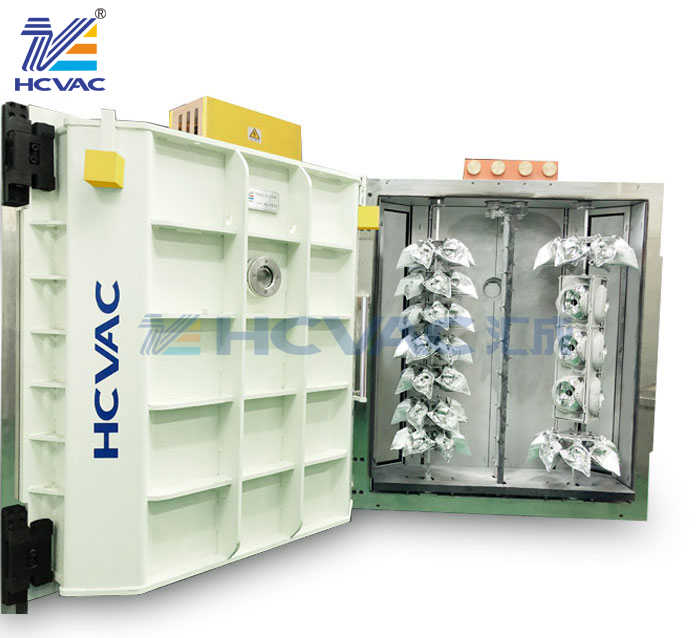


News centres
Vacuum coating machine is widely used in all walks of life, such as furniture, tableware, decorations, hardware, electronic products, glass, military products, etc., so coating products in different fields requires different effects, so the coating process used is also different.

The application of vacuum coating machine is simply understood as coating metal film or coating on metal, glass, ceramic, semiconductor and plastic parts by evaporation, sputtering and subsequent condensation in vacuum environment. Compared with traditional coating methods, vacuum coating is a dry coating, and its main methods include the following: vacuum evaporation. The principle is that under vacuum condition, the evaporated material is heated and evaporated or sublimated by an evaporator, and the evaporated ion flow is directly guided to the substrate, and a solid film is deposited on the substrate, and sputtering coating is performed by connecting a high voltage of 2000 volts to the cathode under vacuum condition to excite glow discharge. Argon ions with positive charges hit the cathode to eject atoms, and sputtered atoms are deposited on the substrate through inert atmosphere to form a thin film layer. Ion plating. That is, vacuum ion plating has been introduced by dry screw vacuum pump manufacturers. It is in the above two kinds.
Developed on the basis of coating technology of vacuum coating machine, it has two technical characteristics. Under vacuum condition, the working gas or evaporated substance (thin film material) is partially ionized by gas discharge, and the evaporated substance or its reactant is deposited on the substrate surface under ion bombardment. In the process of film formation, the substrate is always bombarded by high-energy particles, which is very clean.
Vacuum winding vacuum coating machine is a continuous coating technology by physical vapor deposition on flexible substrate to realize some functions and decorative properties of flexible substrate. The above four types belong to the application of physical vapor deposition technology (PVD). And then chemical vapor deposition (CVD). Thin films are made by chemical reactions. The principle is that at a certain temperature, the reaction gas containing the film-forming material is introduced into the substrate and adsorbed, which produces a chemical reaction on the substrate to form a nucleus, and then the reaction product is separated from the substrate surface and diffused continuously to form a film. Ion beam deposition coating, which combines ion implantation and vapor deposition coating technology, is a technology that uses ionized particles as vapor deposition materials to form thin films with good characteristics at relatively low substrate temperature.